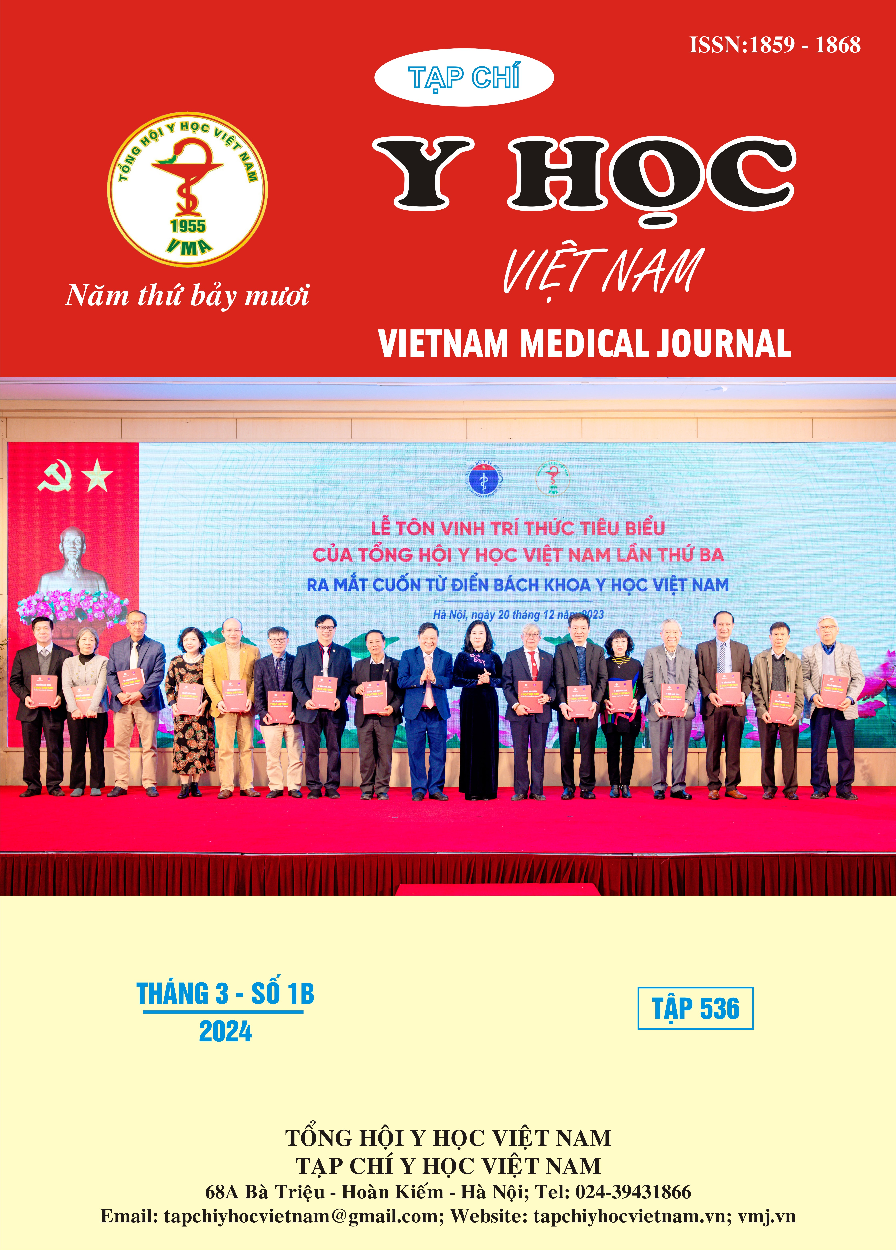NOSOCOMIAL INFECTION IN VIET-ANH WARD AT HOSPITAL FOR TROPICAL DISEASES
Main Article Content
Abstract
Objective: Determine the frequency, describe the epidemiological, clinical, laboratory characteristics, distribution of microbiological agents and bacterial sensitivity of cases of ventilator-associated pneumonia (VAP) and catheter-associated urinary tract infection (CAUTI) in patients with invasive mechanical ventilation and catheterization admitted to the Viet Anh Department - Hospital for Tropical Diseases in 2022. Methods: Cross-sectional study with longitudinal follow-up of cases in adult patients over 16 years old intervention with mechanical ventilation and urinary catheter placement for more than 48 hours. Results: The VAP rate was 37/ 1000 ventilator days, the most common organism is P.aeruginosa, with a Piperacillin/Tazobactam sensitivity rate of 86%. Using intravenous antibiotics from the time of mechanical ventilation can reduce the risk of developing VAP (OR 0.18, 95% CI: 0.06-0.5.5 p=0.002). The CAUTI rate is 21/1000 urinary catheter days, the most common organism is E.coli, Carbapenem sensitivity rate is 85%, prolonged catheterization time and the number of catheterizations more than 2 times increase the risk of CAUTI (p<0.01). Conclusion: VAP and CAUTI in Viet Anh Department have a high frequency. Most of the isolated organisms are sensitive to currently used antibiotics. Shortening the time of invasive intervention can reduce the risk of hospital-acquired infections.
Article Details
References
2. Phạm Kim Oanh, N.V.H., Dương Bích Thủy, Đặc điểm nhiễm trùng bệnh viện tại khoa cấp cứu hồi sức tích cực chống độc người lớn bệnh viện Bệnh Nhiệt đới từ 11/2014 đến 1/2016. Y Học TP. Hồ Chí Minh, 2018. 2(22).
3. Trần Đình Phùng, H.Q.Đ., Phạm Thị Ngọc Thảo, Nghiên cứu viêm phổi liên quan thở máy tại bệnh viện Chợ Rẫy. Y Học TP. Hồ Chí Minh, 2016. 1(20): p. 91-95.
4. Phạm Minh Tiến, P.T.L., Võ Thị Mỹ Duyên. Đặc điểm các trường hợp nhiễm khuẩn niệu liên quan ống thông tiểu tại bệnh viện Đại học Y Dược TP.HCM 2017 Thời sự Y học 2017; Available from: http://hoiyhoctphcm.org.vn/wp-content/uploads/ 2018/06/05F-BS.Tuan-NKni%E1%BB%87u-%E1%BB%91ng-th%C3%B4ng-5tr26-30-.pdf.
5. Trâm, Q.A., Nghiên cứu một số yếu tố nhiễm khuẩn tiết niệu bệnh viện liên quan đến ống thông bàng quang tại bệnh viện Hữu nghị Đa khoa Nghệ An. Tạp chí Y học Việt Nam, 2023. 528(2).
6. François, B., et al., Prevention of early ventilator-associated pneumonia after cardiac arrest. New England Journal of Medicine, 2019. 381(19): p. 1831-1842.
7. National Healthcare Safety Network. Pneumonia (ventilator-associated [VAP] and non–ventilator-associated Pneumonia [PNEU]) event. 2022; Available from: https://www.cdc.gov/nhsn/ pdfs/pscmanual/6pscvapcurrent.pdf.
8. The Centers for Disease Control and Prevention. National and State Healthcare-Associated Infections Progress Report. 2021; Available from: https://www.cdc.gov/hai/data/ portal/progress-report.html.
9. The Centers for Disease Control and Prevention. Urinary Tract Infection (Catheter-Associated Urinary Tract Infection [CAUTI] and Non-Catheter-Associated Urinary Tract Infection [UTI]) Events. 2022; Available from: https://www.cdc.gov/nhsn/pdfs/pscmanual/7psccauticurrent.pdf.


